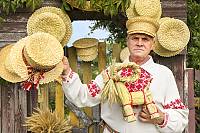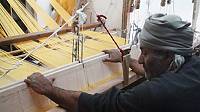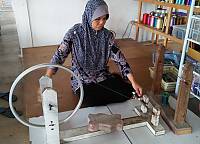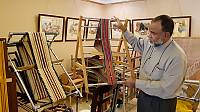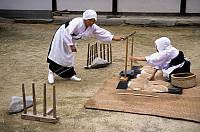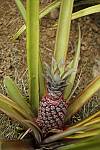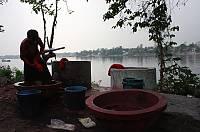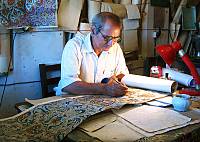
Straw weaving in Belarus, art, craft and skills
inscribed,Straw weaving in Belarus, art, craft and skills Belarusian straw weaving emphasizes the spiritual value and symbolism of the material and the products. Various utensils (such as boxes and baskets), headgear, toys and accessories are made from straw. Some products have special meaning, such as the harvest wreaths or pawuks, complex diamond... Belarus
Al Sadu Educational Programme: Train the trainers in the art of weaving
selected,Al Sadu Educational Programme: Train the trainers in the art of weaving The Al Sadu Society developed the Educational Programme: Train the Trainers in The Art of Weaving in collaboration with the Arts Department in the Ministry of Education, in order to raise awareness about traditional Al Sadu weaving among younger generations in Kuwait.... Kuwait
Handmade weaving in Upper Egypt (Sa'eed)
inscribed,Handmade weaving in Upper Egypt (Sa'eed) The craft tradition ‘Handmade weaving in Upper Egypt (Sa’eed)’ is a complex process that requires time, effort, patience and practice. Many steps and techniques are involved in the loom preparation, threading and weaving to achieve the final product; it is a work of precision and intrica... Egypt
bric created by women in the Malay Peninsula and Sarawak. The term songket refers to the decorative weaving technique used to make the fabric, which entails inserting gold or silver thread in between the base threads. As a result, the extra threads seem to float over a colourful woven background to create an ornamental effect. Songket is woven usin... Malaysia
Traditional weaving of Al Sadu
inscribed,Traditional weaving of Al Sadu Traditional weaving of Al Sadu refers to the traditional woven textile made by Bedouin women: in Arabic, ‘Al Sadu’ means weaving done in a horizontal style. The weaving is a form of warp-faced plain weave made on a ground loom. The cloth forms a tightly woven, durable textile and the weavers make use of... Saudi Arabia
, Kuwait
Weaving of Mosi (fine ramie) in the Hansan region
Inscribed,Weaving of Mosi (fine ramie) in the Hansan region Weaving of Mosi in Hansan is transmitted by middle-aged women in the township located in South Chungcheong Province, Republic of Korea. The region boasts fertile land and sea winds that allow ramie plants to thrive. Weaving ramie cloth involves a number of processes, including harvesting,... Republic of Korea
inscribed,Aklan piña handloom weaving Piña is a textile made from pineapple leaf fibres and woven using a handloom. Farmers harvest the leaves of the pinya Bisaya, a specific pineapple species, and extract the fibres by hand. The fibres are weighed using a local unit of measurement and method involving old coins of different denominations. The kn... Philippines
Traditional art of Jamdani weaving
Inscribed,Traditional art of Jamdani weaving Jamdani is a vividly patterned, sheer cotton fabric, traditionally woven on a handloom by craftspeople and apprentices around Dhaka. Jamdani textiles combine intricacy of design with muted or vibrant colours, and the finished garments are highly breathable. Jamdani is a time-consuming and labour-intensiv... Bangladesh
Traditional skills of carpet weaving in Kashan
,Traditional skills of carpet weaving in Kashan Long a centre for fine carpets, Kashan has almost one in three residents employed in carpet-making, with more than two-thirds of the carpet-makers being women. The carpet-weaving process starts with a design, elaborated from among a series of established styles, including motifs such as flowers, leave... Iran (Islamic Republic of)
Traditional weaving of the Ecuadorian toquilla straw hat
Inscribed,Traditional weaving of the Ecuadorian toquilla straw hat The toquilla straw hat is woven from fibres from a palm tree characteristic of the Ecuadorian coast. Coastal farmers cultivate the toquillales and harvest the stems before separating the fibre from the green outer skin. This is boiled to remove chlorophyll and dried for subsequent b... Ecuador
